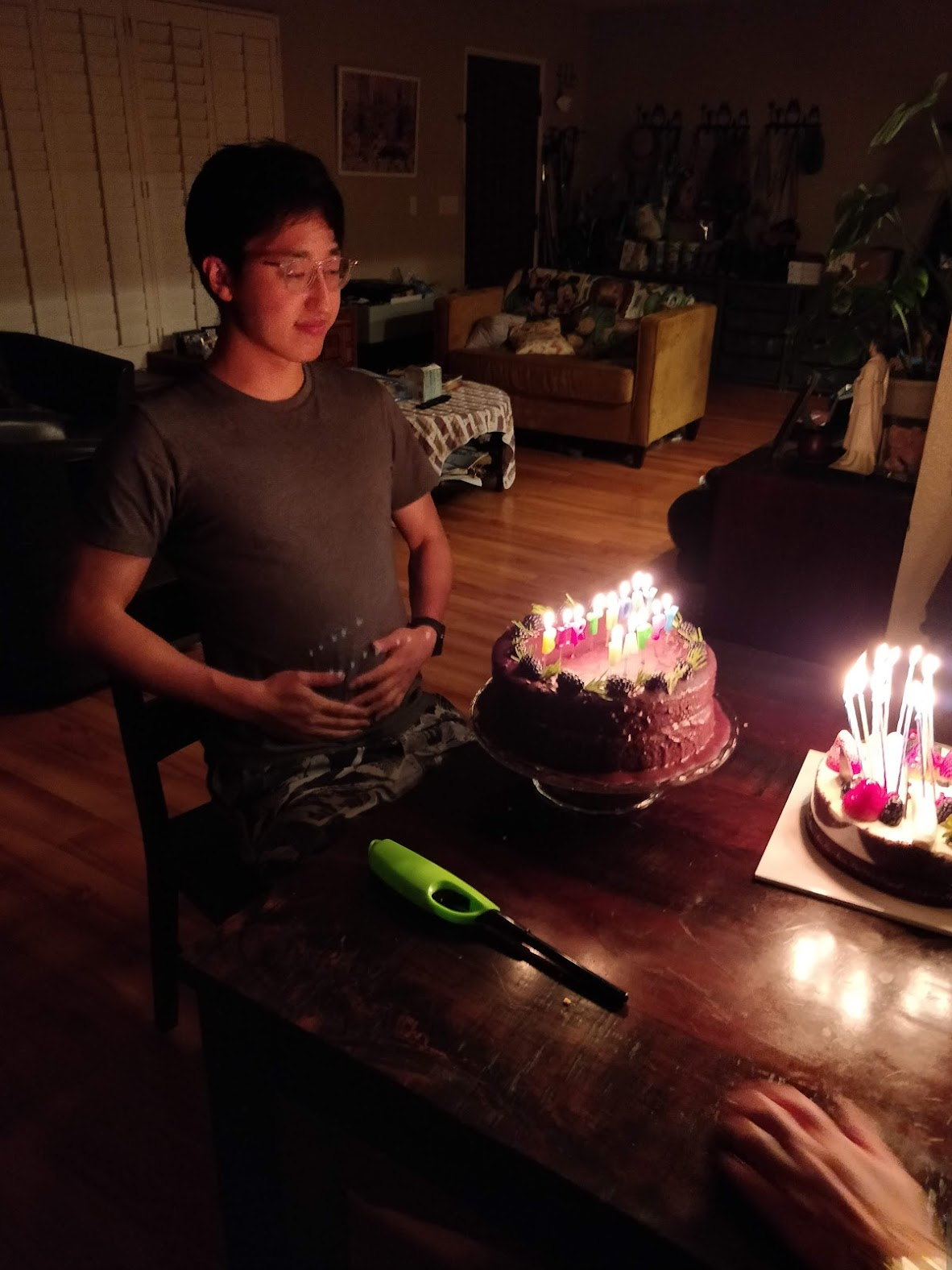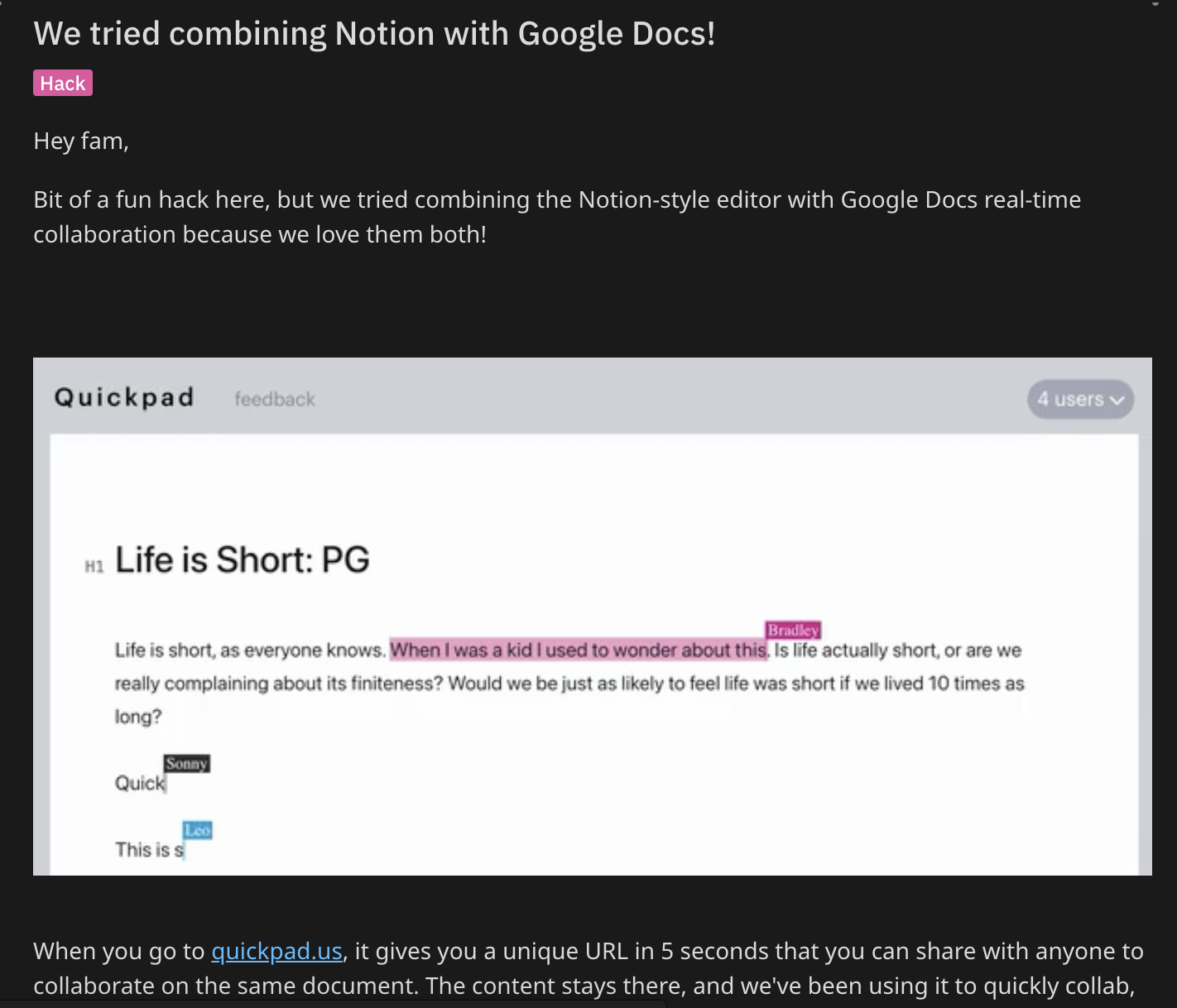Part 1: Pivoting in YC
Part 1: Pivoting#
We got “lucky” getting admitted into YC. Leo and I knew absolutely nothing about startups. We decided to make up for our lack of knowledge regarding startups with sheer effort.
After getting admitted into the YC batch during late December of 2020, I flew over to San Diego, where Leo was, at the start of 2021. Staying in an Airbnb, we worked out of an office that Leo worked out of. We took Saturdays off but otherwise pretty much worked as much as we physically could throughout the week.
That didn’t mean we didn’t have fun. I had my first IN-N-OUT and experienced what was ever sunny weather for the first time. Leo and I explored Torrey Pines during the weekend and joked about life. Just like that, we spent all of January focusing on building our MVP, putting finishing touches and etc.
 Sunset at the Torrey Pines
Sunset at the Torrey Pines
 Celebrating Leo’s birthday at his house
Celebrating Leo’s birthday at his house
At the end of January, we moved to SF near Dolores Park to a hacker house with some friends. It was there that we faced a brutal reality: our product did not have product market fit. We had split our roles: I would be primarily coding the product (CTO) and Leo selling the product (CEO). Leo had tried to sell the product to 30 customers and only got 1 of them to pay. Even with our amateur coding and selling skills, it became pretty evident that there was a larger problem. Documentation “rot” in organization was mainly a behavioral problem as opposed to one that could be easily addressed by software.
For 2 or 3 weeks, we tested variants of Contour, trying variants of internal documentation, external documentation, and etc. Unfortunately, despite our best efforts, we came out of the experience empty handed. It felt like the rest of the batch was busy making steady progress on their startups with exponential curves, so we felt a strong urgency to resolve our situation.
We decided to “pivot” with YC Demo Day lurking in just 2 months. The next idea we explored was building a credit card for college students. It would be a metal card with flashy coating so that all the college kids would talk about it. They’d get cash back on local campus eateries and other places.
We launched Blaze Card (I’d launch with a different name today) with a waitlist. It was also a good excuse to call my friends as “customer discovery” as I got to ask them deep questions about their financial habits. We’d managed to get a few hundred signups for Blaze Card. However, there were pretty immense regulatory hurdles (Card Act of 2009) and our YC Partner alongside all the industry experts that I talked to were really bearish on the idea. We just couldn’t build conviction around the business, so we decided to move on after two weeks of exploring it.
After moving on from Blaze Card, we went through all types of ideas (probably 5 or 6 more in a short period). At one point in February, we were split between two ideas: 1) An open-source Sendy/Sendgrid 2) Affirm for Healthcare. Exploring two ideas at once was very distracting. The process looked like the following: As you explore idea A, you start to see problems with the idea, and idea B suddenly looks a lot more appealing. As an example, for Affirm for Healthcare idea, we found out that most medical debt does not come with interest, making the open-source Sendgrid idea more appealing. Then, we would explore the open-source Sendgrid idea only to find that these users primarily cared about deliverability and building an ESP from scratch is something we didn’t know anything about.
It was the midway through February, and we were still at square-zero. There was another startup that was in a similar boat as us (what became Nourish!), but it felt like for the most part, most of the batch knew what direction they were floating in. I remember being frustrated because pivoting felt like one of those phases where putting more effort didn’t always result in progress.
After being tired and just exploring ideas for a few weeks, we wanted to build something. We even emailed Paul Graham, out of desperation, and he told us to build something that we want, even if it feels like a toy. I listed a set of ideas that we were interested in, and he encouraged us to pursue a digital version of Zagat, a restaurant review platform, because it’s become really difficult to understand what the top places in a certain location are. We didn’t pursue this idea though because we didn’t feel particularly passionate about it.
There was one day though that we did explore an idea for restaurants: a QR menu as a service. We would deliver a QR code to the restaurant for free (this was when COVID was rampant) and customers could scan the menu on their phone and even order. After a day of walking around the Castro, we found that none of restaurant owners really wanted it and that it was just a feature for POS platforms to add this. Also, the ones that really needed a QR code on tables already had one at that point.
We decided to take seriously PG’s advice of building something that we ourselves wanted. Throughout our building of various projects, Leo and I noticed that we would send ourselves a note or a code snippet back and forth, and constantly have to edit them. What if we had a Google Docs meet Notion, where there would be real time collaboration, and you could create a new document quickly (like docs.new) and share it easily by just copy-pasting the url that’s auto-generated? After around a week of hacking, Quickpad was born. We started using it ourselves, and… we had finally built something that we had wanted for ourselves!
We launched Quickpad on Reddit (r/Notion) and it went quickly viral, shooting itself to the top page and quickly getting tens of thousands of enthusiastic users. We saw people conducting technical interviews, writing love letters, planning trips… A few people even just shared the website on Slacks and forums because of the convenience of the tool. It had an inherent virality as well, because people would share their documents with others, and that would bring in more users. However, we were trying to figure out how we could make Quickpad into a real business, and the path to this was not clear. Eventually, after a few weeks after the initial excitement that came from building something that people wanted, we lost conviction in Quickpad becoming a viable business.
 Quickpad!
Quickpad!
YC W21 Demo Day had arrived, and we had nothing to show for it. We had hundreds of user interviews including school teachers, restaurant owners, insurance brokers, and etc., and none of them had really materialized into anything tangible. We had a hard time watching demo day because it felt like we were one of the only companies that had failed the batch.
By the end of 3 months of constant pivoting and demo day, Leo decided to move on from the business and return to his old job. He was someone who I regarded as a brother (and of course still do today), and the process of early stage uncertainty can be mentally taxing and discouraging, especially when it’s sustained over a few months. I remember finding Leo’s departure personally difficult. The process of finding an idea to work on for the next 5+ years, with a strong chance of PMF, and having to do it all alone as a 21-year-old who had no working experience felt daunting at the time. At this point, I had explored 12+ ideas but committed to not giving up.
I spent the month of April doing customer discovery on building Mixpanel for APIs. Basically, I believed that there would be more API companies in the future, and for these companies, understanding how their customers use their products would be a big pain point, and that the existing product analytics tools failed to address this for API companies. In the end, I didn’t end up building enough conviction behind this idea so I moved on.
Around this time, I did a co-founder trial with a friend named Josh regarding building income insurance for gig workers. We built the product together and introduced it to customers. I remember signing up as a Doordash driver and delivering food. Inevitably, because I was a horrible driver, I was late to every single delivery and remember wanting to quit driving after every single order.
Towards the end of May, while I was coding the income insurance product, I had a conversation with my friend Gregg. He told me his sister was experiencing difficulty setting up a brokerage account because she was under the age of 18. We had a conversation about the problem.
I had had the same problem just a few years ago. For my last 2 years in high school, I’d worked as a bus boy at a restaurant in evenings and entered every scholarship competition in order to save up money to go to college. I had tried to invest this money to grow it but could not do so because of my underage. Pretty much all the brokerage accounts at the time required you to be 18 or older. Why was it the case that it was difficult for you to start building wealth when if you’re under 18?
The idea of empowering an entire generation of Americans to access building wealth for the first time was one that felt more inspiring than the dozens of other ideas that I had considered previously. I didn’t know if it was possible to build it. I didn’t know if it was even legal. But if it was indeed possible to build this and empower thousands of teenagers to build wealth early, it felt like a mission that I would gladly put everything into pushing forward.
The months of persistence had paid off. Having to make progress on a daily basis alone without a co-founder required self-accountability and a constant optimistic outlook. Further, seeing my peers graduate college was definitely a wake up call to make the most of the experience of starting a company. Still, by the time that I had discovered what I wanted to work on, the company had no material progress and I had to make that.